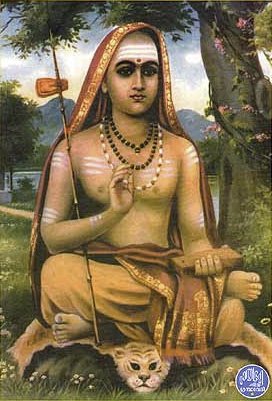Katha Upanishad with Shankara’s Commentary
by S. Sitarama Sastri | 1928 | 23,822 words
The Katha Upanishad is a collection of philosophical poems representing a conversation between the sage Naciketas and Yama (god of death). They discuss the nature of Atman, Brahman and Moksha (liberation). The book is made up of six sections (Valli). This commentary by Shankara focuses on ‘Advaita Vedanta’, or non-dualism: one of the classical ort...
Verse 2.3.5
यथादर्शे तथात्मनि यथा स्वप्ने तथा पितृलोके ।
यथाप्सु परीव ददृशे तथा गन्धर्वलोके छायातपयोरिव ब्रह्मलोके ॥ ५ ॥yathādarśe tathātmani yathā svapne tathā pitṛloke |
yathāpsu parīva dadṛśe tathā gandharvaloke chāyātapayoriva brahmaloke || 5 ||5. As in a mirror, so within one's self; as in dreams, so in the world of the manes; as indistinctly seen in water, so in the world of the Gandharvas; as of light and shade, so in the world of Brahma.
Shankara’s Commentary:
Com.—How is explained. As one in the world sees his own image reflected in a mirror very distinctly, so the realisation of the atman in one's intelligence, when spotless like a mirror, becomes clear. As in dreams, the perception is indistinct and produced, i.e., (obscured) by the reminiscences of the waking state, so indistinct is the realisation of the atman in the world of the manes, being engrossed in the enjoyment of the fruits of karma. As the image of one's self reflected in water is seen indistinctly, with the various parts not defined, so is the realisation of the atman in the world of the Gandharvas certainly indistinct. Thus, it is inferred from the authority of the sastras, even in other worlds, it is only in one, the Brahmaloka, that it is very distinct, as that of light and shadow and that (Brahmaloka) is hard to attain requiring as means, a combination of very special karma and knowledge, i.e., (worship). The drift, therefore, is that one should attempt to realise the atman even while here (in this world).
